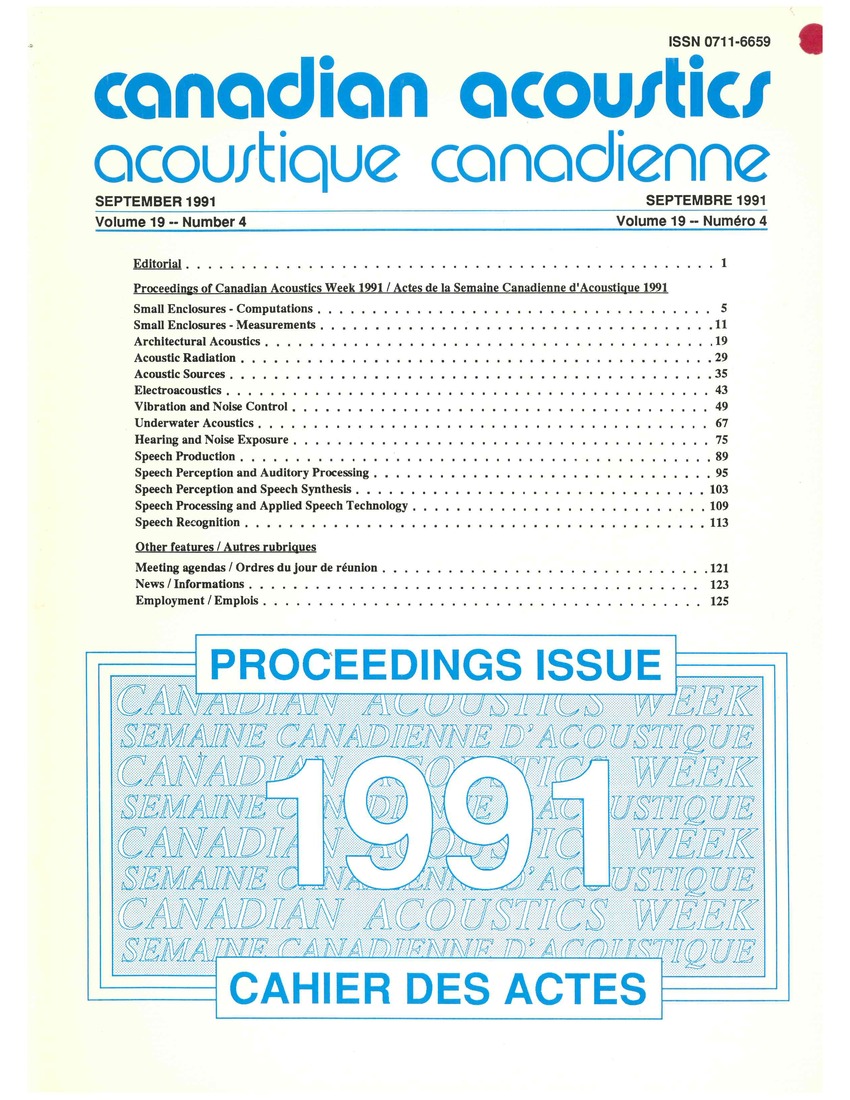Numerical methods for solving acoustic radiation problems
Keywords:
acoustic field, acoustic intensity, acoustic radiators, finite element analysis, numerical methods, 2D models, axisymmetric models, acoustic radiation problems, infinite wave envelope formulation, wave element solution, conventional finite elements, low order wave elements, higher order elements, acoustic near fieldAbstract
The infinite wave envelope formulation has been shown to be able to accurately model different types of acoustic radiation problems. The large calculation speed advantage over the boundary element method has been demonstrated. In a wave element solution, normally both conventional finite elements and low order wave elements are used for high accuracy solutions. Moving to higher order elements allows the element to better model the acoustic near field, and in some cases the need for conventional finite elements is eliminatedAdditional Files
Published
How to Cite
Issue
Section
License
Author Licensing Addendum
This Licensing Addendum ("Addendum") is entered into between the undersigned Author(s) and Canadian Acoustics journal published by the Canadian Acoustical Association (hereinafter referred to as the "Publisher"). The Author(s) and the Publisher agree as follows:
-
Retained Rights: The Author(s) retain(s) the following rights:
- The right to reproduce, distribute, and publicly display the Work on the Author's personal website or the website of the Author's institution.
- The right to use the Work in the Author's teaching activities and presentations.
- The right to include the Work in a compilation for the Author's personal use, not for sale.
-
Grant of License: The Author(s) grant(s) to the Publisher a worldwide exclusive license to publish, reproduce, distribute, and display the Work in Canadian Acoustics and any other formats and media deemed appropriate by the Publisher.
-
Attribution: The Publisher agrees to include proper attribution to the Author(s) in all publications and reproductions of the Work.
-
No Conflict: This Addendum is intended to be in harmony with, and not in conflict with, the terms and conditions of the original agreement entered into between the Author(s) and the Publisher.
-
Copyright Clause: Copyright on articles is held by the Author(s). The corresponding Author has the right to grant on behalf of all Authors and does grant on behalf of all Authors, a worldwide exclusive license to the Publisher and its licensees in perpetuity, in all forms, formats, and media (whether known now or created in the future), including but not limited to the rights to publish, reproduce, distribute, display, store, translate, create adaptations, reprints, include within collections, and create summaries, extracts, and/or abstracts of the Contribution.


